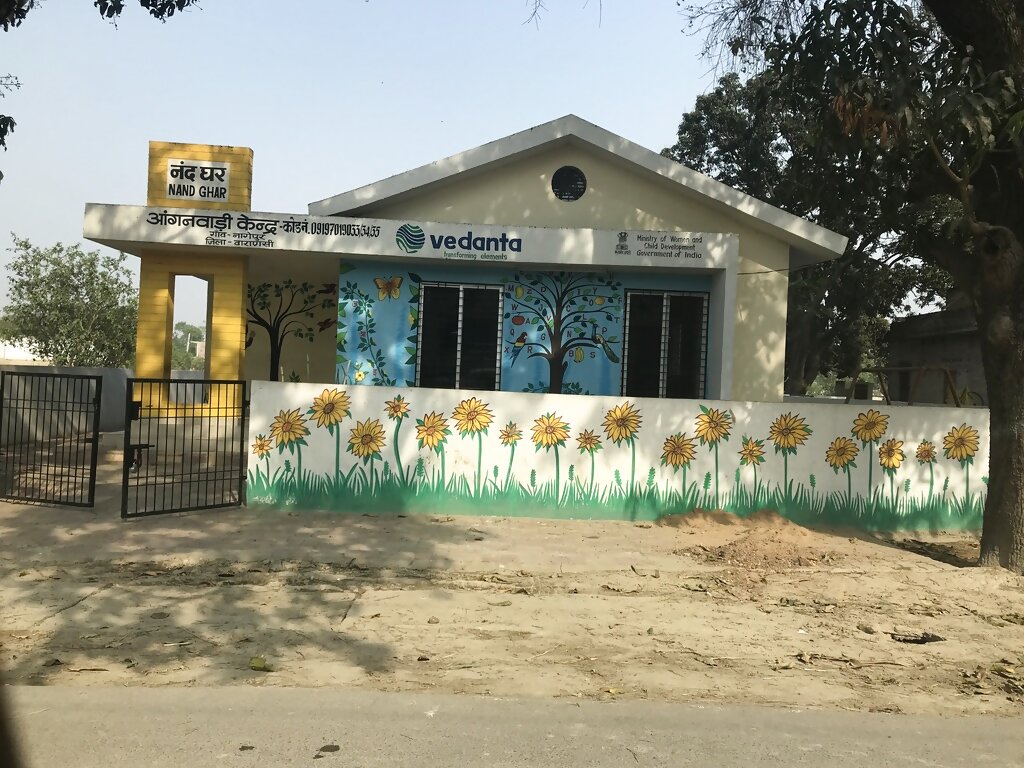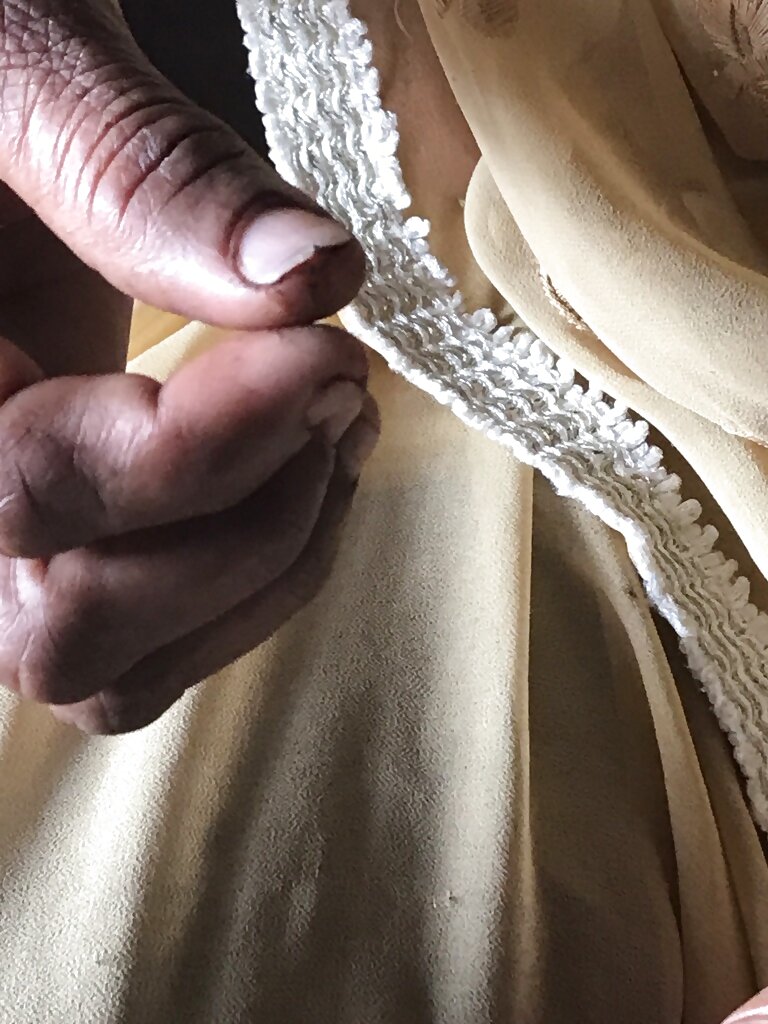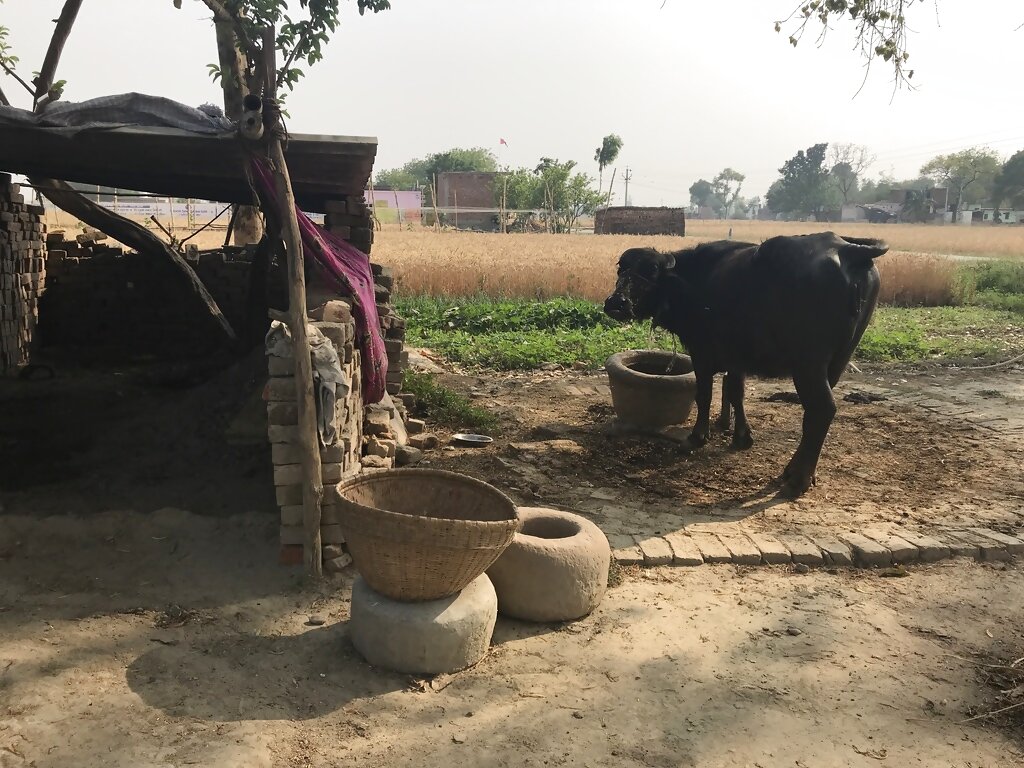
views
In every election, there are conversations and analysis on various factors that impact the results: caste, money, unemployment and agrarian crisis among others. In all of these factors, women appear as a footnote. Do women vote according to caste? What do they want from the government? Do they feel a woman politician is better for women? This series is an attempt to find out How Women Vote.
Nagepur (Uttar Pradesh): Nand Ghar, a floral painted concrete building is the first thing that greets you in Nagepur, one of the four villages in Varanasi adopted by Prime Minister Narendra Modi.
The anganwadi for child care was initiated by diversified metals & mining conglomerate Vedanta and launched in partnership with the Union Ministry for Women and Child Development. Three years later, just as the country is about to choose the next prime minister, Usha, a resident of the village, says, "I have no use of that place, children go and play there. What I want is a job."
Usha, 42, has four sons. Three of them are married and work as daily wage labourers at construction sites. The earnings aren't enough for a family of 11, so Usha makes beaded jewellery to help.
For every kilo of beaded pins that she makes, Usha gets Rs 400. It takes her about half a month to reach that benchmark, working out to around Rs 27 a day. "Modi ji made us an ideal village. We have pucca roads, water pumps, toilets and 'Nand Ghar'. But what we are still struggling with is money. There are no jobs here," she says.

"Look at my hands. It's painful. Making jewellery for so long has led to this," says Usha as she extends her palms to show the bruises. The skin on her fingertips has peeled off. "Even after this painful work, we get paid so little. But what else can I do with these hands of mine now?" she asks.

Many in this village belong to the community of non-Yadav OBCs. Roughly considered to be a third of the state population, non-Yadav OBC support usually stands as the ‘balancer’ in elections. While major parties like the SP, BSP and BJP leave no stone unturned to woo them, the formation of small caste-based parties is very common.

Usha says that while she had voted for the BJP in the 2014 Lok Sabha elections, she hasn't decided who she will be voting for this time.
"Behenji (Mayawati) worked for the people of her own community. She gave them cycles. But she didn't care about us," she says.
"I think cycle was good for us," she says, referring to Akhilesh Yadav's Samajwadi Party and its symbol, the cycle. Asked if she knows about the Mahagathbandhan between SP, BSP and Rashtriya Lok Dal against the BJP, she says, "These politicians will just do anything."
In the Prime Minister's adopted village, most women complain about the now-defunct Samajwadi Pension Yojana. "We used to get Rs 1,500 every month, now we get nothing," says Shyam Kumari. The scheme was scrapped by the Yogi Adityanath government after it came to power in March 2017.
In its manifesto for the ongoing Lok Sabha elections, the Samajwadi Party had promised to provide a monthly pension of Rs 3,000 to women belonging to poor families as an extension of its previous scheme.
For Shyam Kumari, not much has changed in the last five years, or even after her village made it to international media. She still lives in a dilapidated kuccha house. Three days before this reporter visited the village, a part of it had fallen down -- a temporary fixture of combined sticks are now just about holding up the house. She didn't get a toilet either. Neither did she get employment at the anganwadi. "Last time we voted for Modi because of the mahaul (ambience or mood). Everyone had voted for him. It's not like that anymore," she says.
Sakuntala, a resident of the same village, has not yet received her widow pension. "It's been seven years since my husband died. I have filled so many forms, but I have not got a single penny."
She, however, has received a free sewing machine from the government. "My eyesight is weak, I can't use that machine. They should have given me money instead," she says.
Sakuntala doesn’t blame the Centre, she says it's the gram pradhan's fault. "He is not from our community, that's why he doesn't want to work for us," she says. The 54-year-old believes that the Modi government has been sending money for development of the village, but the middlemen have pocketed it.
Yet another grouse that the residents of Nagepur have is the lack of a drainage system. "Whenever it rains, we have knee-deep water. No one has done anything about it," says Shyam Kumari.
Meanwhile, according to household electrification data under the Saubhagya scheme, half the village still doesn’t have electricity. There's still no hospital in the village of nearly 3,000 residents.
Right next to the village, there's a training centre run by the Punjab National Bank. Young girls from villages around Nagepur come here to learn computer skills and stitching. There's also a class for farmer skill training.
Geeta, who lives about 5 km from Nagepur takes the stitching classes. "No matter what they say, I will vote for Modi. He has empowered women like us," she says.
But many of the villagers don't agree with Geeta."What do we do with shiny roads? We need employment," Shyam Kumari said. Most of these women depend on their husband and their sons for a living. But Usha feels that she isn't capable of earning her own money. "How long should we keep asking the men for money?" she asked.
Sakuntala wants the same; a way to earn some living. Asked if she feels a woman politician will work for women, she says, "I have seen Priyanka Gandhi on television. I like her. I think she will help women."
The literacy rate of Nagepur is also not very high. In 2011, the literacy rate of the village was 60.64% compared to the Uttar Pradesh average of 67.68%. While the male literacy stands at 70.07%, the female literacy rate is 49.91%.
The high school in the village offers classes only up to 10th. "We don't know what will happen after we finish school. We will have to leave the village if we want to study further or get jobs," says 16-year-old Priyanka.
"If our village is an example of vikas, then why do we still not have jobs?" asks Sakuntala.



















Comments
0 comment